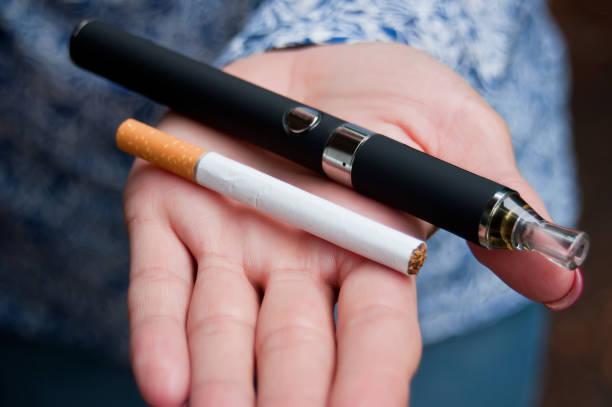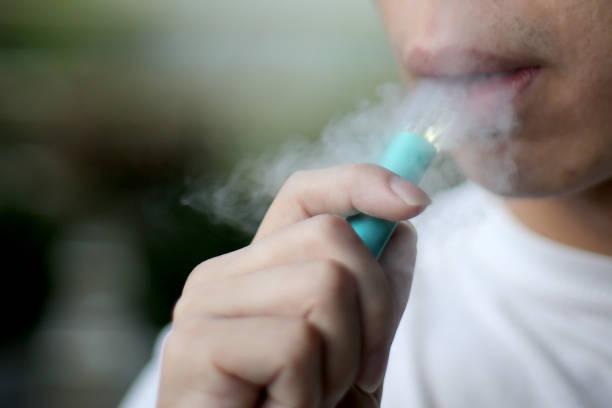In recent time the use of the vaping among the teenagers has become part of the norm which has drawn concerns from parents educators and health wise. What used to be seen as e cigarette use a safer way to consume nicotine compared to smoking is now a trend among youth. But why do teens vape? What motivates them to turn to a behavior which may be dangerous to their health in the future? In this article, we are going to discuss the causes for this increased popularity, why teens are drawn to vaping and possible harms of the practice.
The Rise of Vaping Among Teens

Electronic cigarettes, or “vaping” with vaporized nicotine, flavored liquids, or even THC, have been on the rise for the last ten years. Several published surveys suggest that a large number of teenagers use vaping, with different research revealing that at least half of teenagers have tried vaping, at some point in their lives. All these surges could be as a result of marketing of the e-cigarettes, peer influence and the perception that vaping is safer than actual smoking.

Another element that has spurred the use of the e-cigarette is the use of some sweet-flavored vapors that give an aspect of the fruit, mint or the sweet taste of some of the cakes. It makes vaping seem less dangerous than cigarettes, which give a very strong, unfavorable perception. Moreover, most vaping devices are compact and unobtrusive and that fits the teenage use because they do not have to attract much attention.
Key Factors That Encourage Teens Vape
1. Peer Pressure and Social Influence

Similar to many other practices that teenagers engage in, social pressure can be named the primary reason of vaping among teenagers. There is nothing that is more influential with teenagers than the desire to be accepted by peers and many teenagers get to use vaping as a way of fitting in. This pressure to belong and not be considered ‘square’ can lead people of a young age to make decisions that they probably shouldn’t, such as vaping.
Writing for the Observer, Mark stated that for some teens, the use of vaping is regarded as a social event, an activity that is carried out with friends. In thisway,y teens may get acquainted with vaping, for example, through their friends’ publications in social networks where celebrities or other popular personalities promote e-cigarettes. Vaping also received a new lease of life with TikTok and Instagram; vaping is accepted by many teenagers as being a regular thing they do.
2. Curiosity and Experimentation

Cadets are active in nature with curiosity and often search for new experiences. To some people, vaping is a part of freedom and an adventurous step towards doing something that is still a taboo but not as sinful as smoking a regular cigarette. The luxurious appearance of different types of vaping devices, along with the variety in flavors, satisfies their curiosity.
Further, the curiosity is also driven by the belief that it is relatively safer than smoking normal cigarettes. This small loophole is a major problem and it is as a result of the type of publicity that e-cigarettes enjoy. Most electronic smoking devices are marketed as safer than traditional cigarettes, which makes teens think that vaping is not as dangerous as using cigarettes.
3. Stress and Anxiety Relief
Today, adolescent students experience some mental disorders such as stress, anxiety, and depression. This way, many teens can use vaping as prescription for these emotional problems that they have to face every day. The various liquids that are used in vapes usually contain a stimulant known as nicotine which has the ability of helping one do away with stress or anxiety for sometime. But with time, the substance nicotine causes addiction and this compounds mental health problems.

Pressure from the academic work, the increased social expectations on account of social networking sites, and home environment all add up to make the teen speaking the language of overwhelm. To some people, vaping offers a quick fix — or even just a way to block out some of these stressors. But this only brings a fleeting romantic dream that is still dangerous from the angle of prolonged health impacts.
4. Accessibility and Marketing Tactics
Today, adolescent students experience some mental disorders such as stress, anxiety, and depression. This way, many teens can use vaping as prescription for these emotional problems that they have to face every day. The various liquids that are used in vapes usually contain a stimulant known as nicotine, which has the ability of helping one do away with stress or anxiety for some time. But with time, the substance nicotine causes addiction and this compounds mental health problems.

Pressure from the academic work, the increased social expectations on account of social networking sites, and home environment all add up to make the teen speak the language of overwhelm. To some people, vaping offers a quick fixorr even just a way to block out some of these stressors. But this only brings a fleeting romantic dream that is still dangerous from the angle of prolonged health impacts.
5. Perception of Vaping as “Cool” or Trendy
This is another factor that has barely made vaping products out of reach for the teenagers who have taken it up as a vice. Although the laws tend to frown upon its use, many teenagers confirm that e-cigarettes are reasonably accessible, either directly from Internet stores, from friends, or even some local shops. The usage of these products is quite common and therefore teen’s chances of trying out vaping are high.

Marketing equally has its contribution towards why teens take to vaping. E-cigarette companies have been criticised for marketing their products to the young since they use bright packaging, famous personalities and trendy social media marketing. Most of these campaigns deal with the enjoyable, tasty, and many-a-times social aspect of vaping while negating the possible adverse impacts on their health.
The Risks Associated with Teens Vape
There can never be a time teenagers are not influenced by what goes on in their society or what they see in the media, everything concerning vaping popular culture terms describes it as something that is very trendy or cool. As is depicted in the movies, and in some music video, and even in some of the social users, vaping is equated to either being trendy.

-
Nicotine Addiction: A lot of the cytok liquids contain nicotine which is a very addictive substance. Nicotine is especially dangerous as far as youthful audience is concerned and initial experiences can influence the accessibility of memory, attention, and learning processes as well as the overall brain development.
-
Lung Damage: Though it is generally recognized as less hazardous to the lungs than smoking, vaping is still no good. The use of vaping has adverse effects on the human body since the chemicals in the vaping liquid cause inflammation of the lungs and cumulative health risk of the respiratory system.
-
Mental Health Issues: Tobacco uses are the leading causes of anxiety and depression among teenagers and make these disorders worse. In turn, during the teenage years the use of vaping devices turns into a kind of a recovery mechanism and forms a rather vicious circle of dependence.
-
Increased Risk of Smoking: According to research, teenagers that use vaping are likely to use actual cigarettes in the future. This is a problem for the premise that vaping is less harmful than smoking and puts questions to the further effect on the population wellbeing.
Addressing the Vaping Trend: What Can Be Done?
Therefore, stopping or discouraging teens vape cannot be accomplished solely by the efforts of parents but requires close collaboration among the parents themselves, schools, and the society. Some strategies that can help address the rise in teens vape include:

1. Education and Awareness
These results suggest that parents should talk with their teens about vaping and discuss the topic in detail. Parents can sometimes understand more why a teenager may want to use vaping products if they provide a safe space for teens to share their thoughts and raise questions on the practice. It also enables one to engage with the other with an aim of being able to dissuade him/her from continued conduct.
2. Parental Involvement
There is necessity to carry on enforcing and enhancing the regulation in the marketing and selling of e-cigarettes to minors among policymakers. Extent to which different vaping products are appealing can be reduced by banning some of the flavors or advertisements that target teenagers in a bid to lessen the numbers of adolescents who start vaping.
3. Stricter Regulations
Reducing the number of teenagers who look for vaping products as a way to handle stress and anxiety is possible if there are enough resources free from a vape shop. In this vein, any lawful outlets for healthy and constructive ways to manage emotions and stress may be offered as an effective substitute to vaping.
4. Support for Mental Health
E-cigarettes have now grown popular among teenagers due to reasons like peer influence, curiosity, and being able to access them easily and of course being ‘trendy’ . Despite knowing it as an innocent act, teenagers are out there vaping themselves sick; with nicotine dependence and lung disease being the primary repercussions of vaping. Solving this problem needs the cooperation of parents, educators and policymakers and the triple approach of education prevention and support.
Conclusion
Adolescents use vaping in different ways, for self-social related reasons, curiosity and a perception that vaping is safer than smoking. Flavors influence youth since they want to taste what they consider fashionable, vaping is fashionable, and they have easy access to it. However, vaping leads to some risks such as the formation of nicotine addiction, lung injury, and adverse impacts on mental health. Subsequently, raising awareness, encouraging free discussion, and upgrading the legislation can be designed to bring the number of teenagers who try vaping down and preserve their health in future.
Summary
Teenagers use vape because of the influence from friends, curiosity, and of course, from the belief that vaping is safer than smoking. Flavor attraction, status of vaping as cool, and availability likewise add to these young people’s take on it. However, there are adverse effects associated with vaping which include; nicotine dependency, lung disease, and psychological impacts. Through raising awareness, encouraging nonstop discussion and promoting more rigid rules and laws, teenagers will be saved from the misfortune to become part of vapers.

